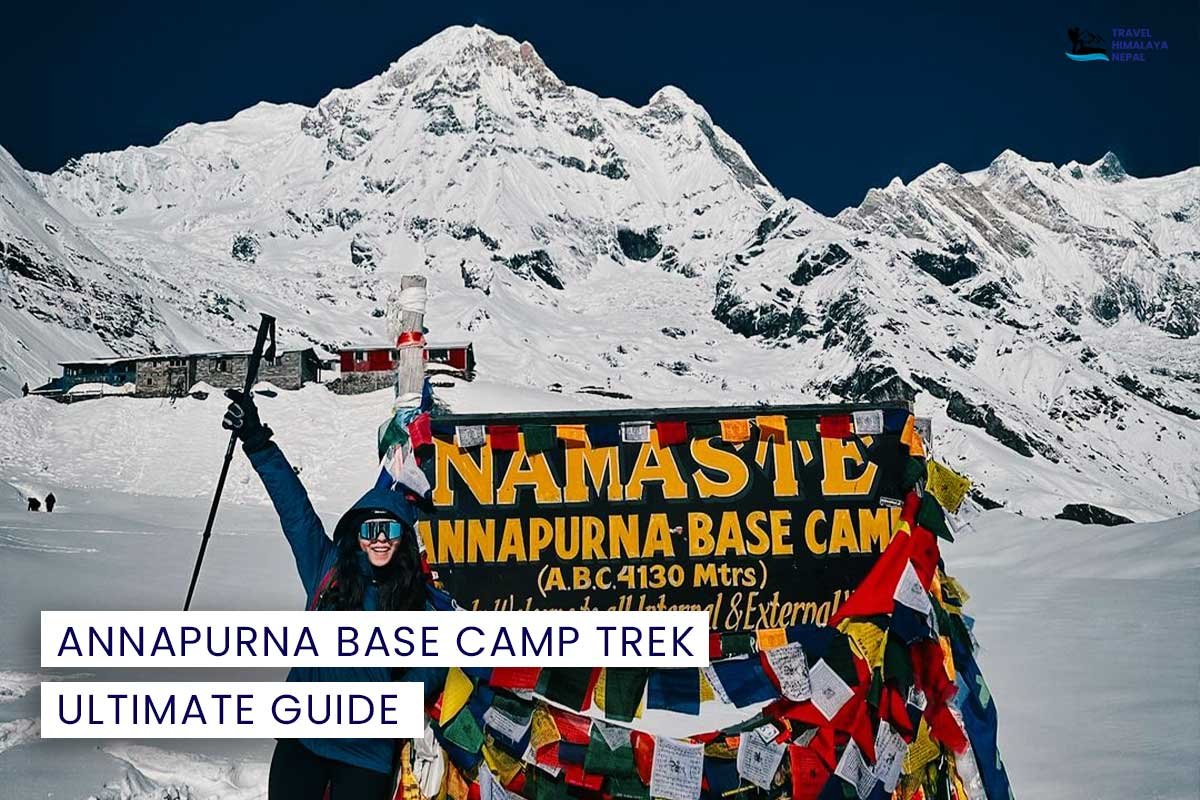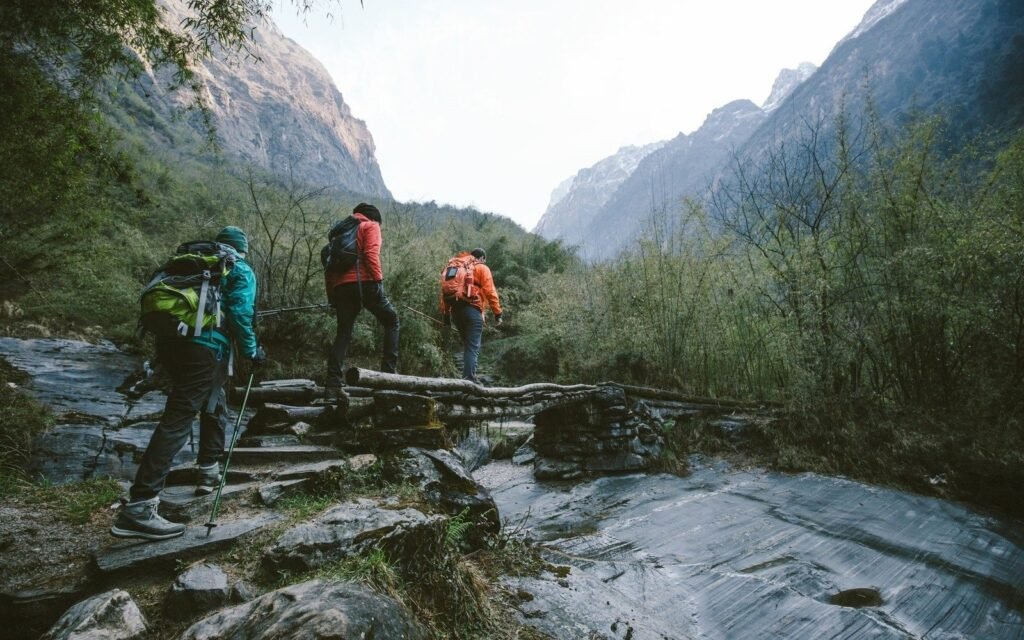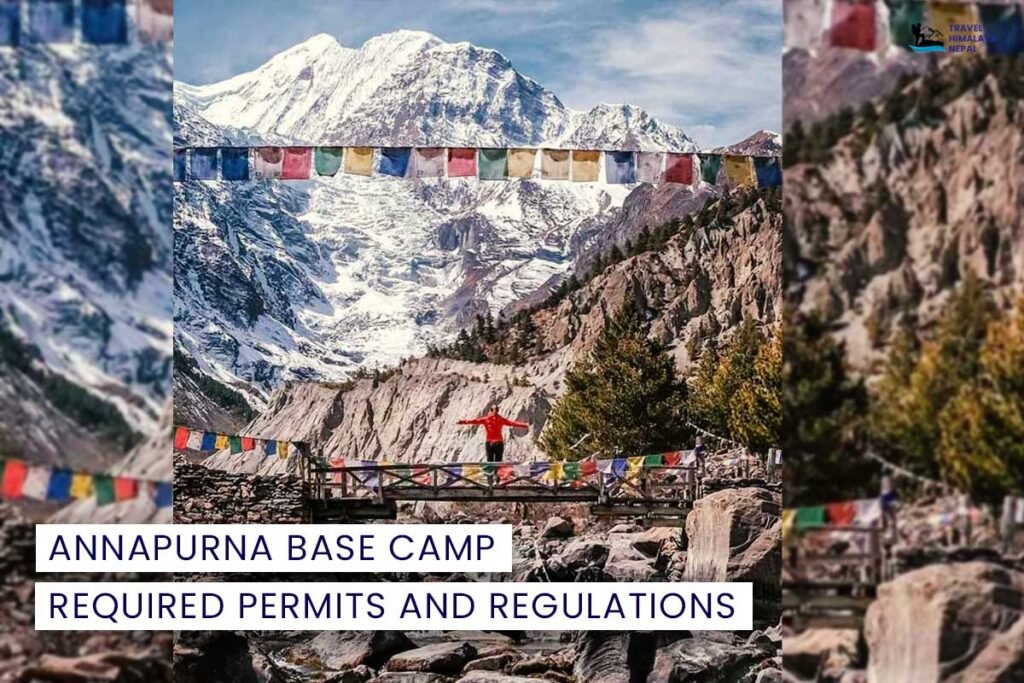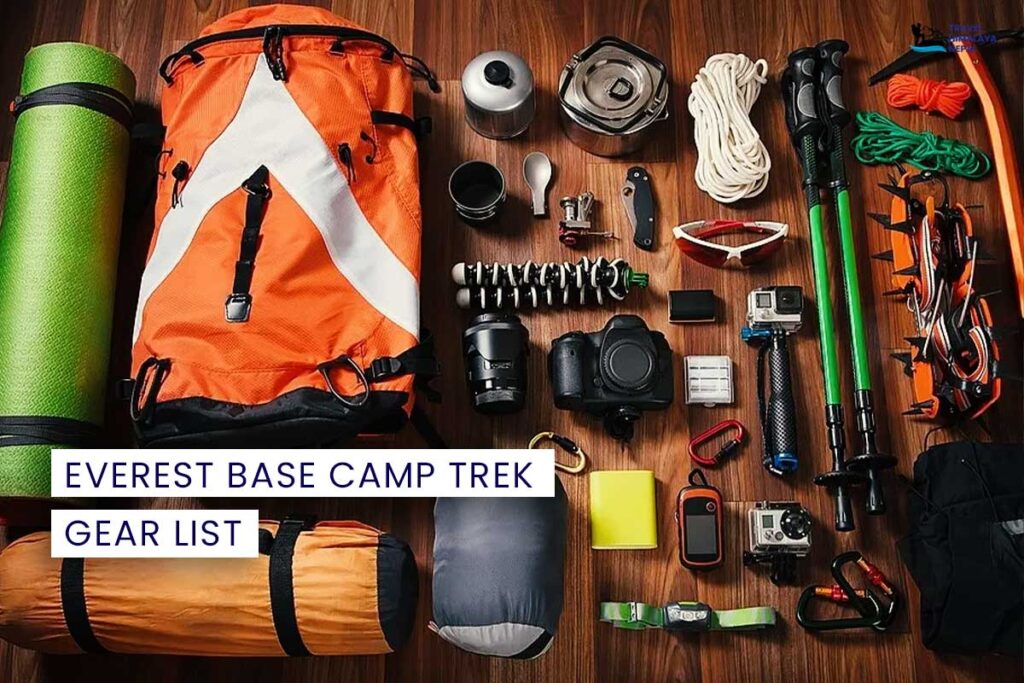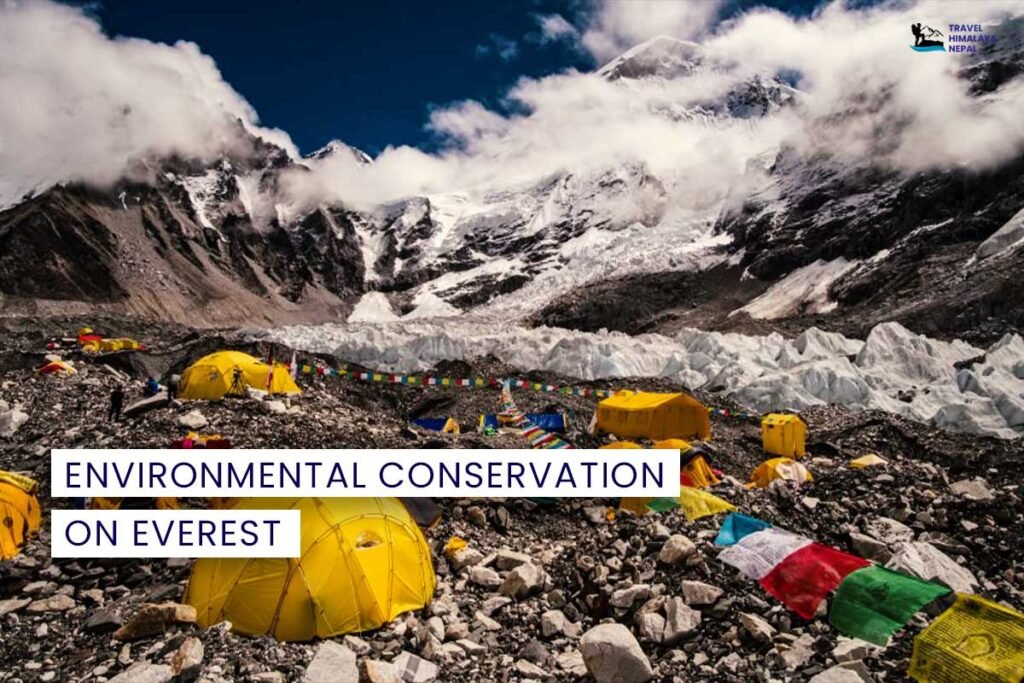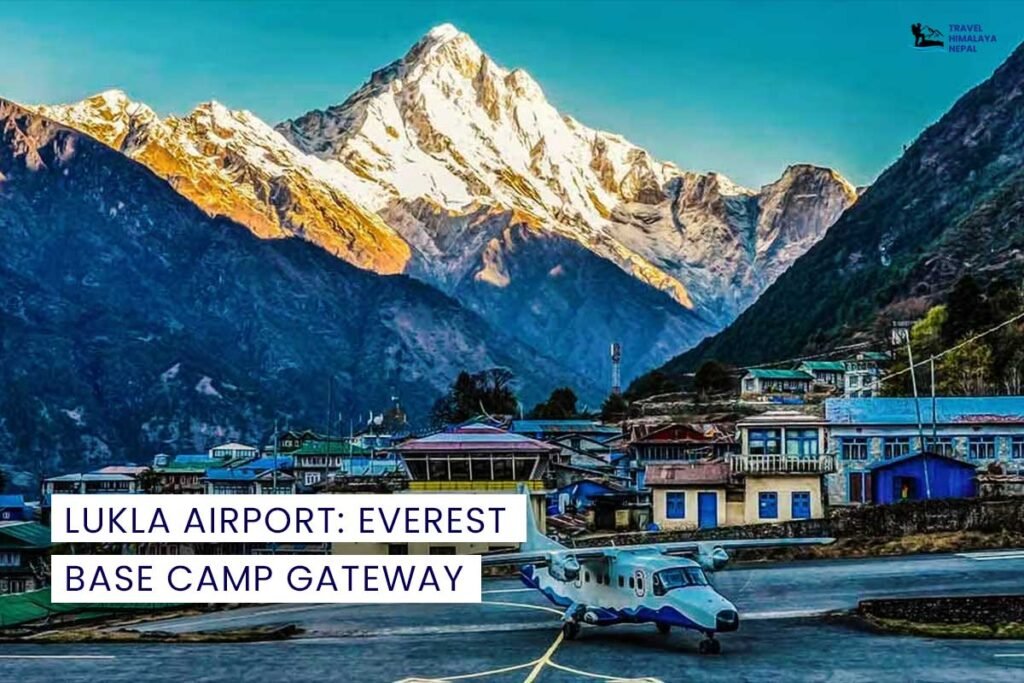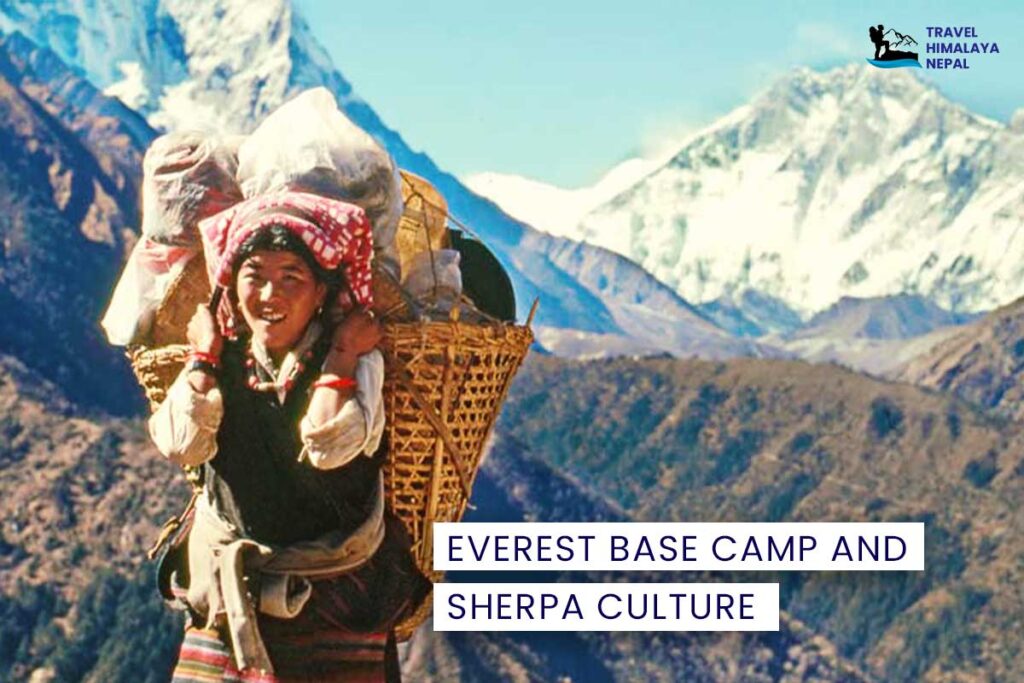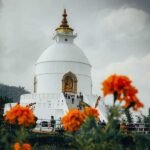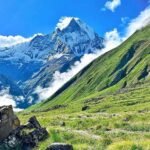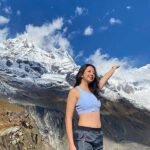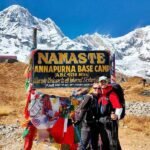Embark on a journey through the heart of the Himalayas with our comprehensive guide to the Annapurna Base Camp (ABC) Trek. This guide is meticulously crafted to help you navigate one of Nepal’s most beloved trekking routes, offering essential insights into planning, execution, and what to expect along the way.
Table: Key Takeaways for the Annapurna Base Camp Trek
| Aspect | Details |
|---|---|
| Duration | 6 to 14 days depending on the chosen itinerary |
| Difficulty | Moderate, suitable for reasonably fit individuals |
| Best Season | Fall (Sept-Nov) and Spring (Mar-May) for the best conditions |
| Cost Range | $650 to $1200 including permits, guide, accommodation, and transportation |
| Permit Requirements | Annapurna Conservation Area Permit (ACAP) and Trekkers’ Information Management System (TIMS) |
| Starting Point | Typically Pokhara, with various route options available |
| Accommodation | Teahouses along the trail offering basic to comfortable amenities |
| Attractions | Panoramic mountain views, cultural experiences in Gurung villages, diverse flora and fauna |
Exploring the Trek: What Makes ABC So Special?
The ABC Trek is not just a journey; it’s an experience that immerses you in the natural beauty and cultural richness of Nepal. The trek takes you through lush rhododendron forests, traditional Gurung villages, and rugged terrains, all set against the backdrop of the majestic Himalayas. From the outset in Pokhara, the trail introduces you to a mix of cultural heritage and natural splendor.
Itinerary Options
Whether you choose a leisurely 14-day trek or a more compact 6-day adventure, the ABC Trek is flexible to suit different schedules and fitness levels. A typical trek starts from Nayapul, moving through Ulleri and Ghorepani, Poon Hill, Tadapani, and finally to the base camp itself. Each segment offers unique vistas and challenges, with ample opportunities to acclimatize and enjoy the local hospitality. Learn more about trekking routes here.
Best Time to Trek
Timing your trek is crucial for an optimal experience. The best months are September to November and March to May, when the weather is favorable, offering clear skies and moderate temperatures. The offseason treks, like winter and monsoon, come with their challenges such as heavy snow and visibility issues, respectively. Discover the best times to trek.
What to Pack
Packing efficiently is key. Essentials include layered clothing, sturdy trekking boots, a first-aid kit, and a water purifier. It’s important to pack light to ease your journey, especially if you’re trekking without a porter. Check out the comprehensive packing list.
Permits and Regulations
To trek in the Annapurna region, you’ll need an ACAP and a TIMS card. These are vital for maintaining the trails and ensuring your safety. Remember to keep these documents handy throughout your trek. Details on required permits.
Accommodations Along the Way
Teahouses are the primary form of accommodation, offering the basics—a bed, hot meals, and the warmth of Nepali hospitality. As you ascend, accommodations may become more Spartan, reflecting the remote environment. Find out more about accommodations.
Cultural Insights
The trek is also a cultural voyage that offers insights into the life of high-altitude communities. The trails wind through villages that showcase the daily lives, traditions, and festivities of the Gurung and Magar communities. Gain cultural insights.
Flora and Fauna
The ABC trail is rich in biodiversity, including rhododendrons, orchids, and a variety of bird species. The higher you climb, the more you’ll notice the shift in vegetation from lush green forests to sparse alpine conditions. Explore the flora and fauna.
Preparing Physically and Mentally
Physical preparation cannot be overstated. The trek is demanding, and the better your condition, the more you’ll enjoy the journey. It’s also crucial to prepare mentally, readying yourself for the highs and lows of high-altitude trekking. Tips on physical preparation.
Safety, Etiquette, and Trekking Solo
Safety is paramount. Always adhere to the trail rules, respect local customs, and keep the environment clean. Trekking solo can be fulfilling, but joining a group offers companionship and an added layer of security.
Explore trekking safety and etiquette. Considerations for solo and group trekking.
Nutritional Tips and Environmental Conservation
The trek demands high energy; thus, understanding food and nutrition on the trail is crucial. You’ll encounter a range of local and international foods, with an emphasis on carbohydrates to fuel your journey. Learn about food and nutrition on the trek.
Maintaining the integrity of the natural landscape is a responsibility for all trekkers. Practices such as carrying out your trash, using eco-friendly products, and respecting wildlife habitats are essential for conservation. Learn about environmental conservation practices.
Photography and Memorable Moments
Annapurna Base Camp offers breathtaking landscapes that are a photographer’s dream. From the majestic fishtail peak of Machhapuchhare to the expansive Annapurna range, there are endless opportunities to capture the beauty of the Himalayas. Check out the photographic guide.
Practical Insights for a Smooth Trek
Before setting off, familiarize yourself with the essentials of trekking insurance and emergency procedures to ensure a safe trip. Understanding these aspects can significantly mitigate risks. Guide to trekking insurance and emergency procedures.
Planning a trek with children involves additional considerations, from ensuring their comfort to adjusting the itinerary for shorter walking days. Tips for trekking with children.
Finally, a short guide to Pokhara, your gateway to the Annapurna region, will help you make the most of your stay before or after your trek. Pokhara offers a range of activities and cultural experiences that can enhance your Nepali adventure. Discover what Pokhara has to offer.
Cultural Treasures Along the Trail
The Annapurna region is not only famed for its breathtaking landscapes but also for its rich cultural tapestry. The trek passes through diverse ethnic communities, including the Gurungs and Magars, renowned for their warm hospitality and rich traditions that have thrived in harmony with the harsh mountainous conditions. Engaging with local communities offers a glimpse into the vibrant cultural practices and ancient traditions preserved over centuries. This interaction not only enriches your trekking experience but also contributes to the local economy. For a more immersive experience, you can participate in community activities and enjoy local performances of music and dance, which reflect the community’s history and beliefs. Explore more about Annapurna’s cultural heritage.
Environmental Stewardship on the Trail
Trekking in such pristine environments comes with the responsibility to leave no trace. The Annapurna region’s ecosystem is delicate, and the impact of tourism is profound. It’s imperative to practice ethical trekking habits to preserve this natural paradise for future generations. This includes managing waste properly, using water resources sparingly, and avoiding plastic. Trekkers are encouraged to use refillable water bottles and solar chargers, adhere to designated trails, and support eco-friendly lodges. Learn how to trek responsibly.
Health and Safety: Preparing for the Altitude
High-altitude trekking poses unique challenges, and the ABC Trek is no exception, reaching heights of over 4,130 meters. It’s crucial to understand the risks of altitude sickness and the importance of proper acclimatization. Symptoms can range from headaches to more severe health issues, and acclimatization days are vital to reduce these risks. Ensure you have a comprehensive health check-up before embarking on the trek, and discuss any concerns with your guide. Always have a plan for emergency evacuation services. Get detailed health and safety tips.
Capture Your Journey: Photography Tips
The stunning vistas of the Annapurna range offer unmatched opportunities for photography enthusiasts. Capture the ethereal beauty of dawn breaking over the Annapurna Sanctuary or the intricate details of a prayer flag fluttering in the high winds. To make the most of your photography, consider the time of day and lighting conditions, typically early morning or late afternoon. Use a polarizing filter to enhance the deep blues of the sky against the stark whites of the snow-capped peaks. And remember, while capturing these moments, it’s essential to respect local customs regarding photography. Check out the ultimate photographic guide.
Extended Adventures: Beyond ABC
For those who wish to extend their trekking experience beyond Annapurna Base Camp, several options merge seamlessly with the ABC trek. The Ghorepani Poon Hill trek is a popular add-on that offers panoramic views of the entire Annapurna range. This addition is perfect for those looking to experience the breadth of the region’s natural beauty without the extended duration of more challenging treks like the Annapurna Circuit. Each trail provides its unique perspective of Nepal’s rugged landscapes and rich cultural tapestry. Explore additional trekking options.
Planning Your Trek: Practical Tips
When planning your trek, consider the logistical aspects such as travel insurance, route choices, and booking with a reputable trekking agency. These agencies can provide knowledgeable guides who add invaluable insight and security to your journey. Moreover, detailed planning helps manage expectations and ensures that you are well-prepared for the physical demands of the trek. Review the specific gear and clothing you’ll need, depending on the season you choose to visit, and always plan for sudden weather changes. Find essential planning advice.
Why Choose Annapurna Base Camp Trek?
Choosing the ABC Trek means selecting an adventure that combines the allure of high peaks with the charm of Nepalese culture. This trek not only challenges your physical limits but also expands your understanding of human resilience and the power of nature. It is a journey that promises both introspection and exhilaration, set against some of the most dramatic backdrops on the planet.
As we conclude our Ultimate Guide to the Annapurna Base Camp Trek, we’ll provide final insights into making your journey a seamless, memorable experience. We’ll cover logistical preparations, the benefits of trekking in a group versus solo, and provide a checklist to ensure you’re fully prepared for the adventure ahead.
Logistical Preparations: Ensuring a Smooth Trek
Efficient planning is key to a successful trek. This includes arranging all permits in advance, booking flights or transportation to and from Pokhara, and securing accommodation spots. While spontaneous trekking can be thrilling, the ABC Trek benefits significantly from pre-planning, especially during peak seasons when teahouses and guides may be in high demand. Consider your fitness level and choose an itinerary that allows ample time for acclimatization to prevent altitude sickness. For comprehensive preparation, ensure you’re familiar with the route’s challenges and the necessary gear and supplies. Discover detailed logistical tips.
Group Versus Solo Trekking: What to Choose?
Deciding whether to join a group or trek solo is a significant consideration. Group trekking offers shared experiences, cost-sharing opportunities for guides and porters, and enhanced safety. It’s particularly advisable for novice trekkers. On the other hand, solo trekking offers flexibility and personal solitude, appealing to more experienced hikers or those seeking a contemplative journey. Whichever choice you make, ensure you are well-prepared and informed about the trek’s demands. Explore solo and group trekking options.
Final Checklist Before You Go
Before you embark on your trek, here’s a checklist to ensure you have everything covered:
- Permits and Documents: Ensure you have your TIMS card and Annapurna Conservation Area Permit.
- Gear and Clothing: Pack layers for varying temperatures, a sturdy pair of boots, gloves, a hat, and a waterproof jacket.
- Navigation Tools: Maps, a compass, or a GPS device.
- Health: First-aid kit, medications, and sun protection.
- Nutrition: High-energy snacks and a water purification system.
- Miscellaneous: Cash for purchases along the route, a camera, spare batteries, and a solar charger.
Cultural Etiquette and Sustainability
Respect for local customs and sustainable travel practices are crucial. Dress conservatively, manage waste responsibly, and engage with locals respectfully. Supporting local businesses by buying local products can also contribute positively to the community. These practices ensure that trekking benefits are mutual between trekkers and hosts. Learn more about cultural insights and sustainability.
The Transformative Power of the Annapurna Trek
The ABC Trek is more than just a physical challenge; it’s a transformative journey that offers profound insights into Nepal’s natural beauty and cultural richness. It provides a perspective on life that few other experiences can offer, surrounded by some of the highest peaks in the world and enriched by the vibrant cultures of the Annapurna region.
This guide aims to prepare you comprehensively for what may be one of the most memorable adventures of your life. With the right preparation, respect for the environment and culture, and a spirit of adventure, the Annapurna Base Camp Trek will not just be a journey through the Himalayas, but also an unforgettable expedition into the depth of your own resilience and spirit.

